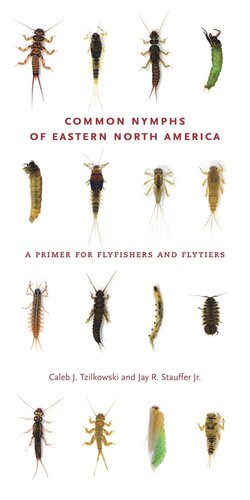

Most ebook files are in PDF format, so you can easily read them using various software such as Foxit Reader or directly on the Google Chrome browser.
Some ebook files are released by publishers in other formats such as .awz, .mobi, .epub, .fb2, etc. You may need to install specific software to read these formats on mobile/PC, such as Calibre.
Please read the tutorial at this link: https://ebookbell.com/faq
We offer FREE conversion to the popular formats you request; however, this may take some time. Therefore, right after payment, please email us, and we will try to provide the service as quickly as possible.
For some exceptional file formats or broken links (if any), please refrain from opening any disputes. Instead, email us first, and we will try to assist within a maximum of 6 hours.
EbookBell Team

4.8
34 reviewsAlthough the concept of “matching the hatch” has been central to flyfishing for 150 years, it has been used almost exclusively for dry flyfishing. With Common Nymphs of Eastern North America: A Primer for Flyfishers and Flytiers, Caleb Tzilkowski and Jay Stauffer Jr. take trout enthusiasts in another hatch-matching direction—to the year-round underwater nymph “hatch,” which, in most cases, constitutes 90 percent of trout diets.
Successful flyfishers have at least rudimentary knowledge of the organisms that artificial flies imitate. The relatively few and very best anglers are expert at identifying and imitating nymph appearances and habits. A major hurdle to becoming expert at nymph matching is overcoming two major limitations that make these animals difficult to locate, capture, and identify: first, nymphs live underwater, sometimes burrowed into the stream bottom, and second, many nymphs are nearly microscopic in size. Common Nymphs addresses those challenges by including habitat and life history information regarding the nymphs, tips for their identification, and representative high-resolution photographs of more than thirty types of aquatic organisms and their imitations.
In the seemingly saturated flyfishing literature, this book offers something truly groundbreaking. With state-of-the-art microscopy and their years of scientific and practical experience, Tzilkowski and Stauffer provide readers an innovative close-up look at identifying and imitating nymphs that have been historically underrepresented in the flyfishing and flytying literature.